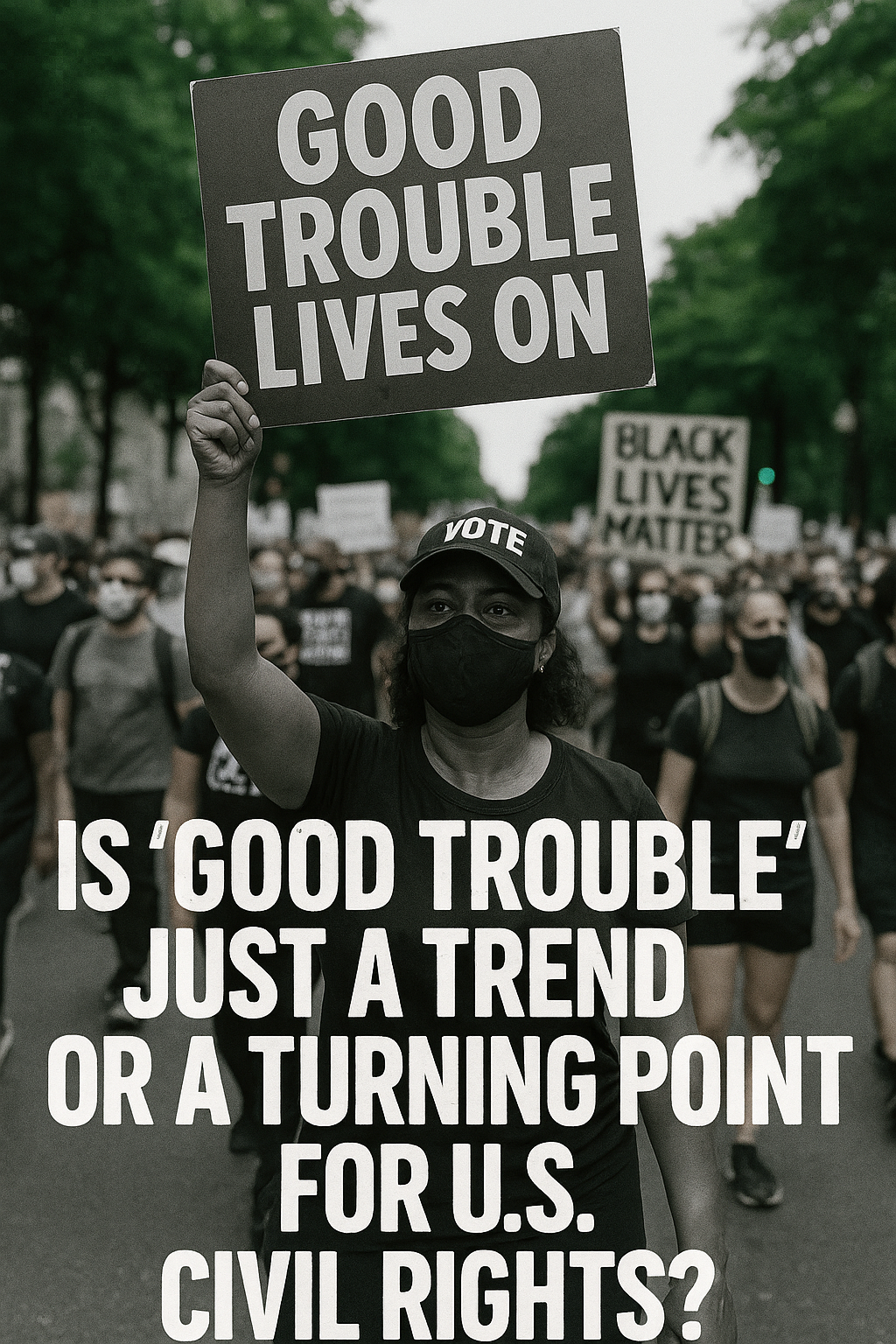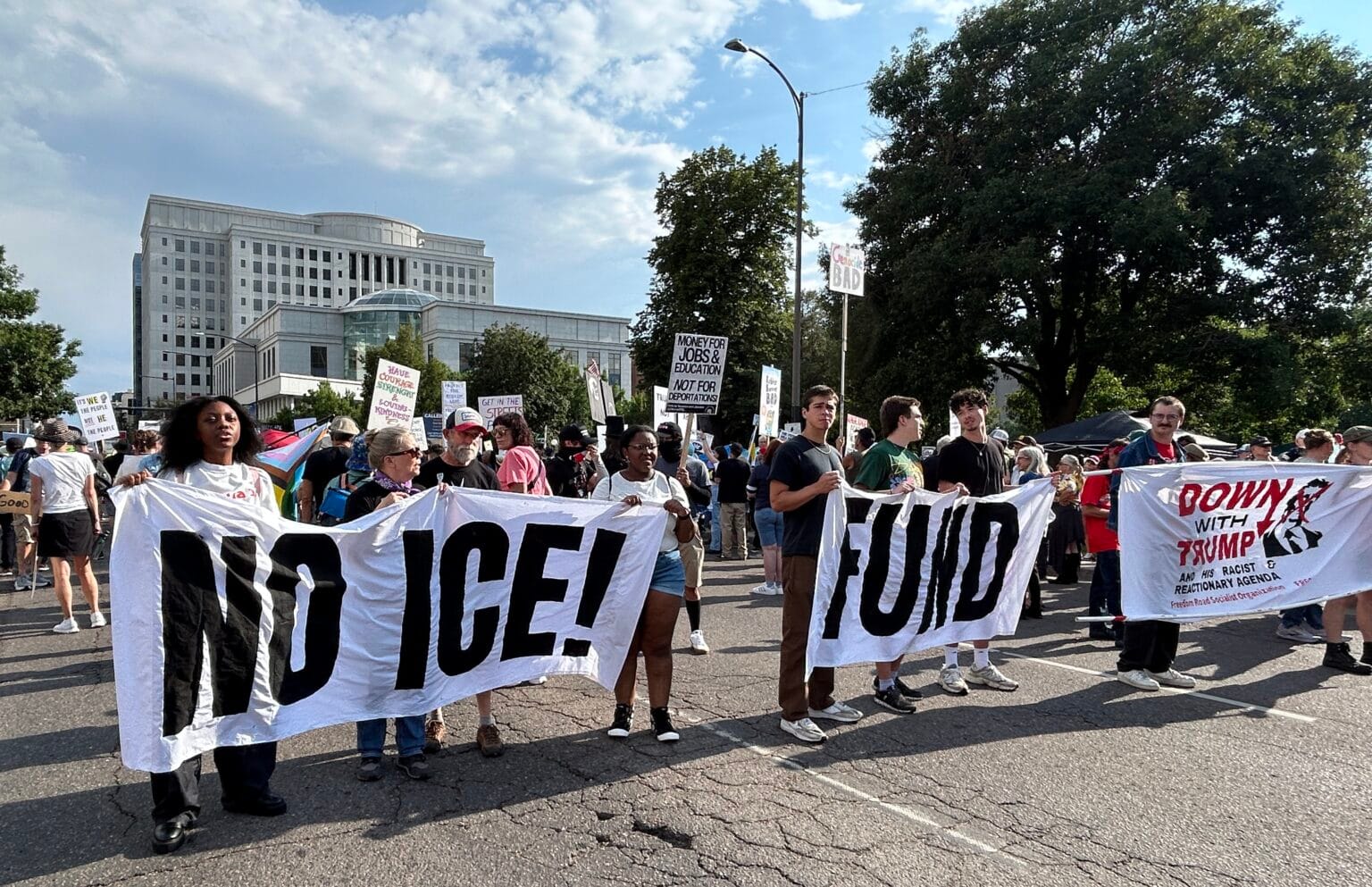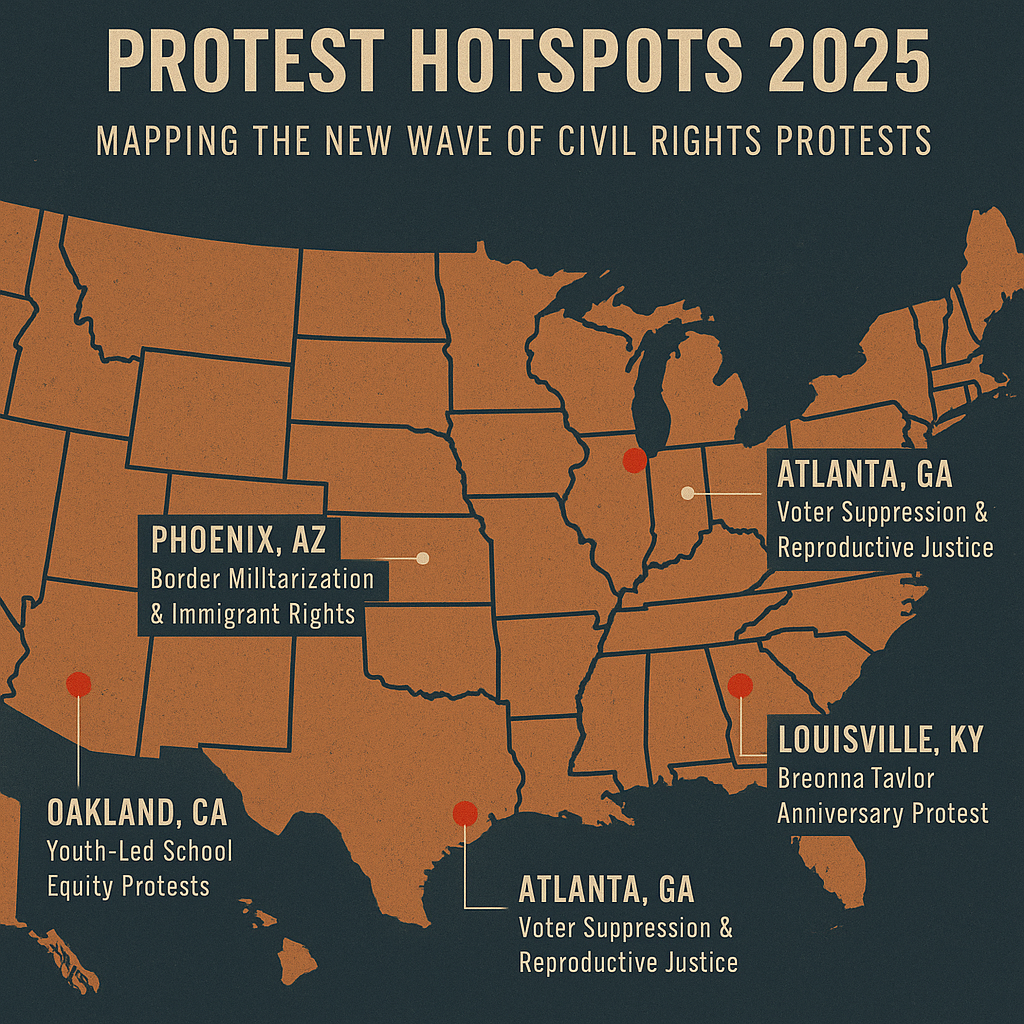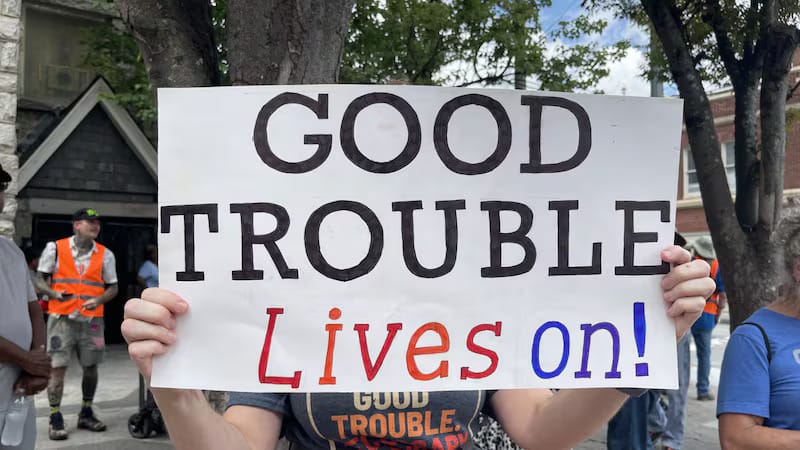Protest or Warning? What the ‘Good Trouble Lives On’ Movement Really Means in 2025
Explore the rise of the ‘Good Trouble Lives On’ movement in 2025 - how youth activists are using John Lewis’s legacy, digital tools, and decentralized protests to fight for voting rights, police reform, reproductive justice, and education equity in a high-stakes election year.

Written by Lavanya, Intern, Allegedly The News
WASHINGTON, D.C., July 23, 2025
In the summer of 2025, a powerful phrase is driving protests across the nation: “Good Trouble Lives On.” This slogan started as a tribute to the late civil rights leader John Lewis and has turned into a modern uprising that combines traditional nonviolence with new forms of disruption.
Young protesters are no longer merely fighting for police reform or voting rights. They are demanding broad changes to address various forms of inequality in America. But what do these protests truly aim to achieve? Are they signaling a major political shift, or are they just another round of symbolism before things return to normal?
Origins and Evolution: From John Lewis to Gen Z
"Never, ever be afraid to make some noise and get in good trouble." – Congressman John Lewis, 2018
The term “Good Trouble” comes from Congressman Lewis, who put his life on the line during the civil rights movement of the 1960s. His message to resist unjust laws through peaceful disobedience significantly impacted American history, leading to events like the Selma marches and the Voting Rights Act.
By 2025, the concept has been revitalized through digital protests, social media performances, and meme culture. It is no longer just a memory; it has become a living framework for young Americans challenging the failures of institutions to uphold democracy, dignity, and fairness.
“It’s not nostalgia. It’s fuel. Lewis told us what to do, and we’re doing it louder, faster, and in ways he probably never imagined,” said 22-year-old protester Kayden Brooks in Detroit.
The Spark in 2025: What Triggered the Surge?
The protests gained momentum after the January 2025 Supreme Court ruling that supported restrictive voting ID laws in Arizona and Georgia, coupled with the Senate's failure to pass the Equal Access to Abortion Act. These events sparked outrage among youth-led groups already disillusioned by the loss of rights they had been promised.
By February, hundreds gathered at the Georgia Capitol wearing T-shirts with Lewis’s image and holding signs reading: “Good Trouble Is Our Birthright.” Within days, these images spread widely across TikTok and Threads, generating over 20 million interactions in just a week.
By March 15, organized protests erupted in:
- Phoenix, protesting border surveillance drones.
- Birmingham, demanding equal funding for Black public schools.
- Columbus, blocking roads to support trans health protections.
“This isn’t a flash mob. It’s a pressure cooker,” said UC Berkeley political science professor Alondra Steele. “This generation has grown up with broken promises—this is their release valve.”

Protest in the Age of Platforms: How Hashtags Became Weapons
The hashtag #GoodTroubleLivesOn became more than a catchphrase; it served as a tool for organizing protests. Unlike earlier movements that relied heavily on Facebook or Twitter, this generation is mobilizing through:
- TikTok soundbites featuring Lewis’s voice mixed with trap beats.
- Instagram Lives stream real-time confrontations with police.
- Augmented reality filters that display protest messages over city landscapes.
Protest art and rapid visual messaging - signs, filters, and curated visuals have given the movement a unified identity, even without a central leadership.
Protest Hotspots & Political Flashpoints
Protests have spread to over 60 cities, but the most intense activity is happening in politically strategic areas. According to the Protest Tracker Network, key locations include:
- Atlanta, GA – Ground zero for voter rights.
- Madison, WI – Protests against police brutality following the tasering of an unarmed teenager.
- Phoenix, AZ – Demonstrations on immigration and surveillance.
- Austin, TX – Advocacy for reproductive justice and LGBTQIA+ rights.
- Flint, MI – Focus on education equity and environmental issues.
These cities relate to contested Senate races, abortion bans, or gerrymandered districts.
“They’re not just marching—they’re targeting the system’s weak points,” journalist Rachel Menendez noted on her podcast Voter Uprising.

Clashing Frames: How Media and Politicians Are Spinning the Protests
In a divided media landscape, the protests are being portrayed in sharply different ways:
- Conservative outlets (Fox, The Daily Caller) label the movement as “Antifa 2.0,” often highlighting arrests and disruptions affecting “law-abiding citizens.”
- Progressive media (The Intercept, MSNBC, Vox) emphasize the protesters' demands and highlight racial and gender injustices.
However, mainstream television tends to avoid direct coverage of the protests, instead focusing on commentary. Critics argue this strategy sidelines grassroots voices in favor of political drama.
“We’ve learned to tell our own story because CNN won’t,” said 23-year-old organizer Samira Thomas from Charlotte. “Our feed is our newsroom.”
Arrests, Curfews, and Civil Rights on the Line
Since March 2025, over 4,100 protesters have been arrested, according to the American Civil Liberties Defense Project. In major cities:
- Curfews have been imposed without prior emergency declarations.
- Protesters have reported drones hovering over peaceful marches.
- Courts are challenging facial recognition scans as unconstitutional.
The ACLU has filed 15 lawsuits nationwide, claiming police violated First Amendment protections through illegal surveillance, excessive force, and retaliatory arrests.
In Denver, a class-action lawsuit alleges that police used geofencing warrants to monitor anyone within 300 feet of a protest. The legal outcomes could shape digital privacy laws for years.
The Global Ripple Effect
While “Good Trouble Lives On” is primarily a U.S. movement, it has gained international support:
- In Berlin, activists marched with signs reading “Good Trouble, Global Struggle” in front of the U.S. embassy.
- In Lagos, demonstrators connected their fight against police brutality (EndSARS 2.0) to American racial justice movements.
- In London, Parliament discussed U.S. voter suppression tactics during global democracy forums.
The digital connections through Threads, TikTok, and Telegram have made local American struggles feel relevant worldwide.
“John Lewis belongs to history, but ‘Good Trouble’ belongs to everyone,” said UK activist Shivani Dhar at the 2025 Global Solidarity Summit in Paris.

Culture as Catalyst: How Art and Emotion Keep the Movement Alive
Culture plays a vital role in this movement. From murals to trap remixes to activist drag shows, artistic expression serves as a powerful strategy.
Murals in Oakland depict John Lewis with glowing eyes surrounded by vines spelling out “Good Trouble Grows.” Pop-up theaters in Detroit reenact scenes from the Montgomery Bus Boycott next to current police stops.
“People don’t remember laws. They remember feelings, and art makes you feel,” said Baltimore muralist Lena P., whose street portrait of Lewis has become a significant site for visitors.
This emotional storytelling helps the movement endure, even as media attention fades.
The Turning Point – Symbol or Structural Shift?
The central question remains: will this movement achieve legal and legislative victories, or will it fade into cultural memory?
Signs of potential change include:
- A surge in Gen Z voter registration in swing states.
- At least 13 city councils are currently discussing police reform linked to protest demands.
- School boards in Colorado and New York are adopting anti-surveillance and equity policies pushed by “Good Trouble” youth.
Yet without federal action on voting rights or reproductive freedoms, many worry this will join Occupy Wall Street and March for Our Lives as high-emotion, low-impact moments.
The Most Dangerous Generation?
Far from being indifferent, this generation may be the most challenging to power since the civil rights era, not out of violence, but due to their understanding of various systems: law, media, technology, art, protest, and politics.
“Good Trouble Lives On” is not a memorial. It’s a statement. And in 2025, it might be the loudest one yet.
Is this a desperate plea for attention, or the beginning of real change?
Sources:




